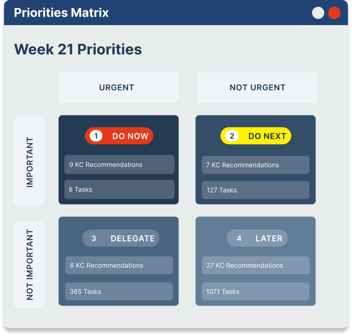4 Blind Spots in Your Project’s Critical Path
The Critical Path Method (CPM) is commonly used for managing highly complex construction projects, but it can be applied to virtually any sector. Project teams and business owners use this method to split up large projects into smaller, more manageable jobs.
Although CPM has proven effective at managing different types of projects, it is not a perfect system. Blind spots frequently occur that can lead to problems such as inaccurate time estimates, inefficient scheduling, and cost overruns.
In this blog post, we will uncover three major blind spots in CPM and explain how project teams can overcome these issues by using software to enhance their schedule data.
What Critical Path Method Does Well
Before we discuss the problem areas of CPM, it’s important to understand why it is such a widely utilized system and how it has benefitted project teams since the 1950’s.
CPM is a reliable way for project teams to budget time and resources for complex projects. It also helps to create some flexibility in scheduling while improving communication between stakeholders and making it easier to prioritize tasks.
While CPM does have its limitations, it also does many things quite well, such as:
- Determining which activities can be worked on in parallel
- Helping project teams identify critical paths and the tasks associated with them
- Showing which tasks have dependencies
4 Reasons Why Critical Path Method Is Seriously Outdated
Over the years, megaprojects have grown in size and complexity at a rate that project management systems have not kept pace with. Critical Path Method has become seriously outdated - so much so that it could leave project teams vulnerable to unexpected deviations and cost overruns.
The key task facing project directors is to prioritize tasks, which can be difficult when relying solely on the Critical Path Method. Here’s why:
- It is binary - The critical path method only tells you if something is on the critical path or not. If two things are on the path, it does not tell you which is more important of the two. You need an algorithm that can tell you what is important and whether it is on the critical path or not.
- Critical path congestion - In many megaprojects, upwards of 60-80% of activities end up on the critical path --> if everything is critical, nothing is critical. You need an algorithm that can tell you what is important irrespective of how many things are on the critical path.
- Lack of insight into noncritical tasks - Critical Path Method is only concerned with the project’s critical path. This means that project teams do not get visibility into tasks that are not part of the critical path. And since noncritical tasks can eventually become critical and vice/versa, this leaves some serious blind spots for project teams.
- It can be easily gamed/susceptible to bias - With the critical path method, People can use P6 features such as constraints to manipulate the priorities --> introduces bias. You need an objective, data-driven approach to prioritization.
Enhance Your Project Management with Foresight AI Engine
The Foresight platform uses criticality scores to help project planners and management teams identify and prioritize critical activities. Born out of the principles of network science, our criticality algorithm goes beyond traditional prioritization methods (such as the critical path method) to provide the most comprehensive understanding of project objectives.
The Foresight platform seamlessly integrates with fragmented sources of raw information to bring personalised insights that project teams can use to ensure their projects stack on track, saving them both time and money.
Book a demo today to discover how Foresight can help you build your projects faster.




